




Tumbling dry clothes is a common practice for many people, as it offers convenience and ease in drying laundry. However, it is essential to follow the manufacturer’s instructions when it comes to tumble drying, as disregarding these instructions can have serious consequences. This article explores the potential risks and problems that can arise from tumbling dry clothes against the manufacturer’s recommendations.
One of the significant consequences of ignoring the manufacturer’s instructions is damage to the fabric. Different fabrics have specific requirements for drying, and tumbling dry clothes that are not suitable for this method can result in shrinkage, stretching, and overall deterioration of the fabric’s quality. This can lead to clothes becoming unwearable or losing their original fit and shape.
Furthermore, tumbling dry clothes against the manufacturer’s recommendations can also increase the risk of fire hazards. Some fabrics, such as those treated with flame retardant chemicals, may require specific drying methods to maintain their fire-resistant properties. Ignoring these instructions can potentially lead to increased flammability and pose a danger to both the clothing and the surrounding environment.
In addition to fabric damage and fire hazards, tumbling dry clothes against the manufacturer’s instructions can also affect the performance of specific garments. For example, drying certain athletic wear or technical fabrics at high heat can compromise their moisture-wicking properties or damage any special coatings or treatments that enhance their performance. This can result in a decrease in the functionality and effectiveness of these garments, ultimately reducing their lifespan.
It is crucial to follow the manufacturer’s instructions when tumble drying clothes to avoid potential fabric damage, fire hazards, and performance issues. Taking the time to read and adhere to these guidelines can help preserve the quality, safety, and functionality of your clothes, ensuring that they last longer and continue to look and perform their best.
Effects of Ignoring Dryer Instructions

Ignoring the instructions provided by the dryer manufacturer and tumbling dry clothes improperly can have several negative effects. These effects can vary depending on the specific instructions that are ignored and the type of clothing being dried. Here are some potential consequences:
Damage to Clothing
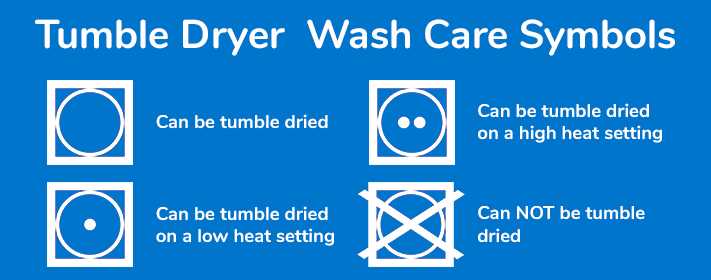
- Tumbling clothes against manufacturer’s instructions can cause excessive wear and tear to the fabric, leading to fraying, pilling, or even holes.
- Delicate fabrics, such as silk or lace, may shrink, lose their shape, or become damaged when exposed to high heat or vigorous tumbling.
- Clothes that require air-drying or a specific drying temperature may become discolored or develop an unpleasant smell if exposed to improper drying conditions.
Reduced Longevity of the Dryer
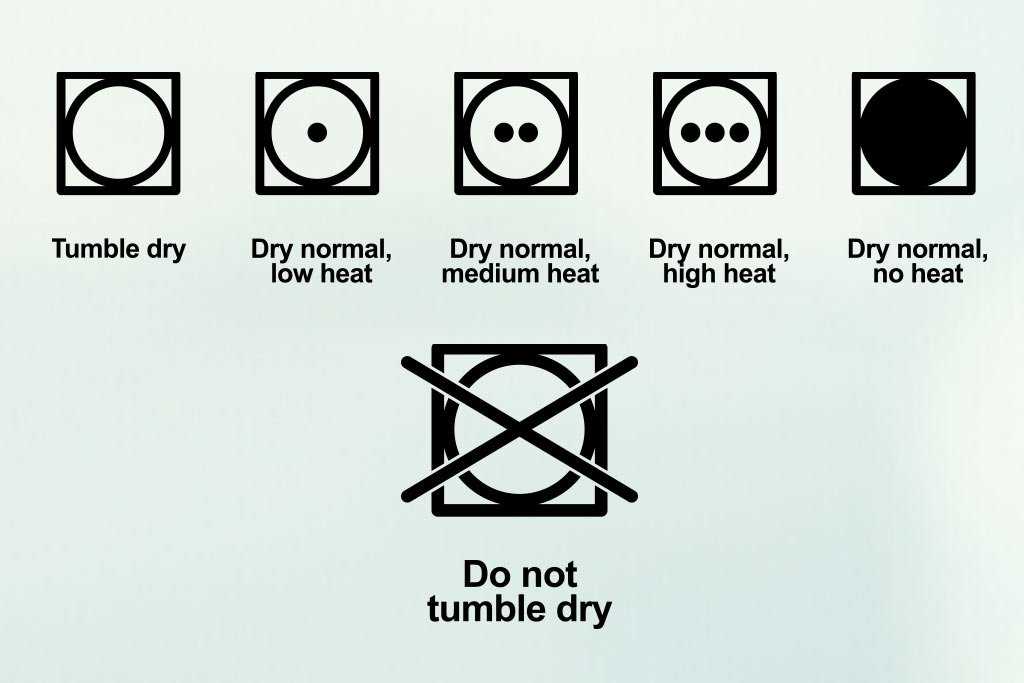
- Continuous tumbling of clothes against manufacturer’s instructions can put additional strain on the dryer’s motor and other components, potentially leading to premature breakdowns or malfunctions.
- Improper drying techniques can cause lint buildup, reducing the efficiency of the dryer and increasing the risk of overheating, which can be a fire hazard.
Inefficiency and Higher Energy Costs

- Tumbling clothes improperly can result in longer drying times, as the dryer may struggle to effectively dry the items. This can lead to wasted energy and increased electricity costs.
- If clothes are not properly sorted before drying, larger items may hinder the drying process for smaller items, requiring additional cycles or longer drying times.
Possible Fires
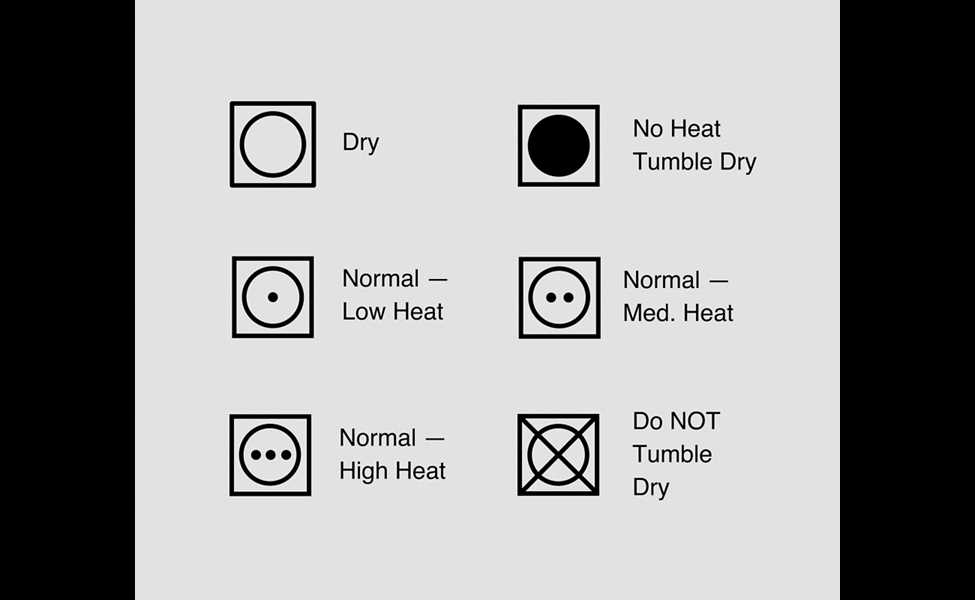
- Ignoring dryer instructions, especially those related to the use of heat settings and airflow, can increase the risk of lint buildup within the dryer’s vents or filter. This can potentially lead to fire hazards if the lint ignites.
- Clothes that are not properly dried and contain residual flammable substances, such as oils or cleaning agents, may also pose a fire risk if exposed to high temperatures or sparks.
Overall, disregarding dryer instructions can have negative consequences for both the clothing being dried and the long-term functionality of the appliance. It is important to carefully read and follow the provided instructions to ensure safe and effective use of the dryer.
The Potential for Shrinking Clothing
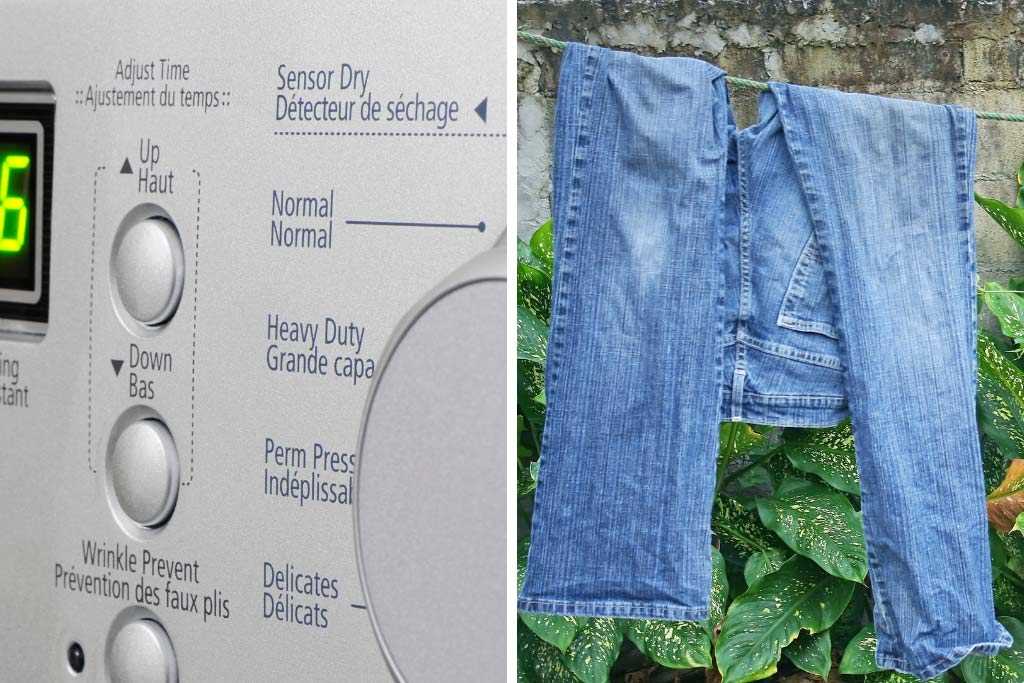
One of the potential consequences of tumbling dry clothes against the manufacturer’s instructions is the risk of shrinking the clothing.
When clothes are put in the dryer, they are exposed to high temperatures and constant movements. This combination can lead to the fibers in the clothing contracting and shrinking. Shrinkage is more likely to occur in garments made from natural fabrics like cotton, wool, and linen, as these materials are more sensitive to heat and agitation.
It is important to note that different fabrics have different shrinkage rates. For example, cotton tends to shrink the most, while synthetic fabrics like polyester and acrylic are less prone to shrinking. However, even synthetic fabrics can shrink if exposed to high heat for an extended period.
Shrinkage not only affects the overall size of the clothing but can also alter its shape and fit. Clothes that were once loose and comfortable may become tight and uncomfortable after being subjected to the dryer. Additionally, garments with decorative elements like embroidery or sequins may become misshapen or damaged due to the heat and movement in the dryer.
To minimize the risk of shrinking clothing, it is important to follow the manufacturer’s instructions for care. These instructions typically include recommendations for washing and drying methods, such as using cold water, gentle cycles, and air-drying. By following these guidelines, you can help preserve the size, shape, and quality of your clothing.
In conclusion, tumbling dry clothes against the manufacturer’s instructions can result in the potential shrinking of clothing. This can lead to a change in size, shape, and fit, making the clothes less comfortable or even unwearable. To avoid shrinking, it is best to adhere to the manufacturer’s care instructions and opt for air-drying or other recommended drying methods.
Damage to Delicate Fabrics
When tumble drying clothes that specifically indicate they should not be tumble dried, delicate fabrics can be easily damaged. Delicate fabrics, such as silk, lace, chiffon, and satin, require special care and attention to maintain their quality and longevity. Tumbling these fabrics against the manufacturer’s instructions can lead to various types of damage.
- Shrinkage: Delicate fabrics are prone to shrinking when exposed to high heat. Tumble drying these fabrics can result in significant shrinkage, making the clothes smaller and potentially unwearable.
- Wrinkling: Tumble drying delicate fabrics can cause them to become excessively wrinkled. The spinning motion and heat can create wrinkles that are difficult to remove, even with ironing or steaming.
- Fading: Some delicate fabrics, like silk and chiffon, are susceptible to color fading when exposed to excessive heat. Tumbling these fabrics can cause their colors to fade or become dull, leading to a less vibrant and appealing appearance.
- Tearing: Delicate fabrics are often fragile and prone to tearing. The agitation and tumbling action of a dryer can cause small tears or even larger rips in these fabrics, rendering them damaged and unwearable.
- Loss of Shape: Delicate fabrics, especially those with unique shapes or draping properties, can lose their original form when subjected to the tumbling motion of a dryer. This can result in garments losing their desired fit or style.
It is essential to follow the manufacturer’s instructions and avoid tumble drying delicate fabrics to prevent the above-mentioned damages. Instead, alternative methods like air drying or laying the garments flat should be employed to ensure their preservation and longevity.
Reduced Longevity of Garments
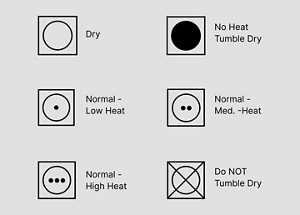
One of the main consequences of tumbling dry clothes against manufacturer’s instructions is the reduced longevity of garments. Tumbling drying clothes at higher temperatures or for longer durations than recommended can cause various damages to the fabric and overall structure of the garment.
Fading: Exposing clothes to high heat for extended periods can lead to color fading. This is particularly true for vibrant and dark-colored garments, as the heat can cause the dyes to break down and fade over time.
Shrinking: Tumbling dry clothes on high heat settings can cause the fabric to shrink, resulting in a garment that no longer fits properly. This is especially problematic for items made of natural fibers like cotton or wool.
Stretching: Over-drying clothes can also lead to stretching, particularly in delicate or loosely woven fabrics. The heat and agitation can pull and stretch the fibers, distorting the garment’s shape and causing it to lose its original form.
Damage to elastic: Elastic bands or waistbands in garments can weaken and lose their elasticity when exposed to excessive heat and prolonged tumbling. This can result in sagging waistbands or loose-fitting clothing.
Disintegration: Certain delicate fabrics or materials may disintegrate or become damaged when subjected to high heat or prolonged tumbling. This is particularly true for items like lace, sequins, or garments made from synthetic materials.
Wear and tear: Tumbling drying clothes against manufacturer’s instructions can cause increased wear and tear on the fabric. The combination of heat, friction, and agitation can accelerate the deterioration of the garment, leading to a shorter lifespan.
It is important to follow the manufacturer’s instructions for drying clothes to ensure their longevity. By air-drying or using the correct settings on a dryer, you can help preserve the integrity and quality of your garments, ultimately extending their lifespan.
Risks to Appliance Safety
Tumbling dry clothes against the manufacturer’s instructions can pose several risks to appliance safety. These risks include:
- Overheating: Tumbling dry clothes that are not suitable for this method can cause the appliance to overheat. Overheating can damage the internal components of the dryer and lead to potential malfunctions or even fires.
- Damaged drum: Clothes that are too heavy or bulky for tumble drying can put excessive strain on the drum of the appliance. This can lead to the drum getting damaged, affecting the overall functionality of the dryer.
- Lint buildup: Clothes that are not suitable for tumble drying may release excessive lint during the drying process. This lint can accumulate inside the dryer’s lint trap or vents, reducing airflow and increasing the risk of lint fires.
- Inefficient drying: Tumbling clothes that require alternative drying methods, such as air drying or flat drying, can result in inefficient drying. This can cause clothes to remain damp or take longer to dry, which can lead to mold or mildew growth and unpleasant odors.
It is important to follow the manufacturer’s instructions regarding tumble drying to ensure the safe and efficient operation of the appliance. Failure to do so can not only lead to potential damage to the dryer but also pose a safety risk to the user and the surrounding environment.
Increased Fire Hazard
One of the consequences of tumbling dry clothes against the manufacturer’s instructions is an increased fire hazard. When clothes are dried in a tumble dryer, they are subjected to high temperatures and constant movement. If the manufacturer warns against tumble drying certain items, it is because they have determined that those items are not safe to be exposed to those conditions.
Tumbling dry clothes that are not meant to be tumble dried can lead to several fire hazards. Firstly, the high temperatures can cause certain fabrics to ignite or melt, leading to a potential fire. This is particularly true for items such as delicate fabrics, synthetics, or materials that contain flammable substances like oils or chemicals.
Secondly, the constant movement of the clothes inside the dryer can create friction and generate heat. If the clothes are not suitable for tumble drying, they may become tangled or bunched up, creating a potential ignition source. This can lead to a fire starting within the dryer itself, which can quickly spread to the surrounding area.
Furthermore, if the clothes are overloaded in the dryer, they may not have enough space to move freely. This can also cause excessive heat buildup and increase the risk of a fire starting. It is essential to follow the manufacturer’s instructions regarding load capacity to ensure safe drying conditions.
To minimize the risk of fire, it is crucial to always follow the manufacturer’s instructions for drying clothes. If an item is not suitable for tumble drying, alternative methods, such as air drying or hanging, should be used. It is also important to regularly clean the lint filter and dryer vent to prevent lint buildup, which can act as fuel in case of a fire.
Key points:

- Tumbling dry clothes against manufacturer’s instructions can increase the fire hazard.
- High temperatures and constant movement can cause fabrics to ignite or melt.
- Friction and heat generated during tumble drying can create a potential ignition source.
- Overloading the dryer can lead to excessive heat buildup and increase the risk of fire.
- Follow the manufacturer’s instructions and use alternative drying methods if necessary.
- Clean the lint filter and dryer vent regularly to prevent lint buildup.
Potential for Electrical Issues
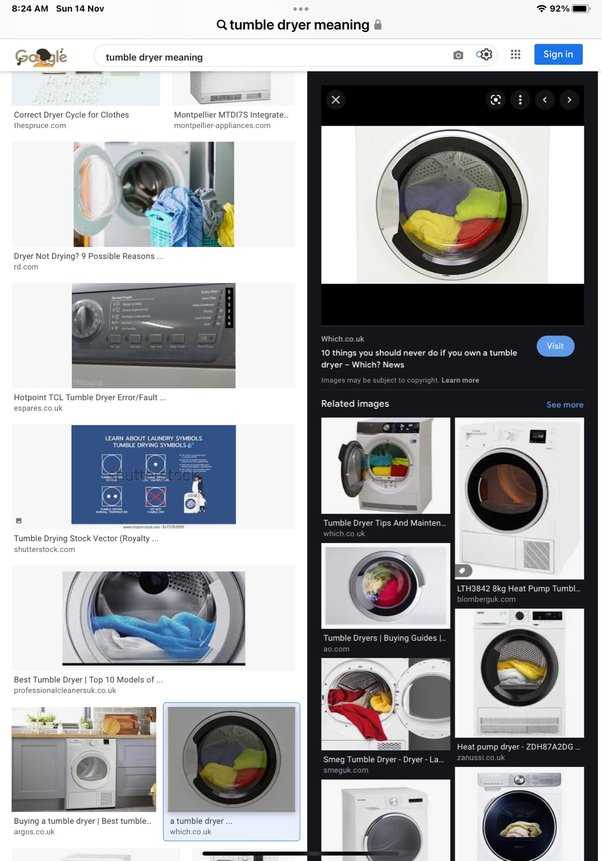
Tumbling dry clothes against the manufacturer’s instructions can potentially result in electrical issues. When clothes are not properly dried and tumbled, there is a higher risk of creating excess moisture and lint buildup inside the dryer. This can lead to several electrical issues:
- Increased risk of short circuits: Excess moisture or lint buildup can create a conductive environment inside the dryer, increasing the risk of short circuits. Short circuits can cause electrical sparks, which can potentially lead to electrical fires.
- Reduced efficiency: When moisture and lint accumulate inside the dryer, it can obstruct the airflow and heat distribution. This leads to reduced efficiency and longer drying times, as the dryer has to work harder to dry the clothes. Increased energy consumption can also result in higher electricity bills.
- Damaged heating elements: Excessive moisture or lint can also damage the heating elements of the dryer. When the heating elements are obstructed or covered, they cannot function properly, leading to inadequate drying and potential overheating.
- Malfunctioning sensors: Many modern dryers have built-in sensors that monitor the moisture levels and temperature inside the drum. Improperly dried clothes can confuse these sensors and cause them to malfunction. This can lead to inaccurate drying cycles and inefficient drying results.
Overall, tumbling dry clothes against the manufacturer’s instructions can pose a significant risk of electrical issues. It is important to follow the instructions provided by the manufacturer to ensure the safe and efficient operation of the dryer.
FAQ
What are the consequences of tumbling dry clothes against the manufacturer’s instructions?
Tumbling dry clothes against the manufacturer’s instructions can lead to shrinkage, color fading, and fabric damage.
Can I still tumble dry clothes even if it’s not recommended by the manufacturer?
It is not recommended to tumble dry clothes if the manufacturer specifically advises against it. Doing so can result in negative consequences such as shrinkage or damage to the fabric.
What happens if I ignore the manufacturer’s instructions and tumble dry clothes?
If you ignore the manufacturer’s instructions and still tumble dry clothes, you may experience issues such as shrinkage, loss of shape, color fading, or even fabric damage.
Is it safe to ignore the manufacturer’s instructions and tumble dry clothes?
No, it is not safe to ignore the manufacturer’s instructions and tumble dry clothes. Following the instructions is important to ensure the longevity and quality of the garments. Tumbling dry against the instructions can result in unwanted consequences like shrinkage and fabric damage.
Can I tumble dry all types of clothes, regardless of the manufacturer’s instructions?
No, not all types of clothes can be tumble dried regardless of the manufacturer’s instructions. Some fabrics are more delicate and cannot withstand the heat and movement of the dryer. It is always best to follow the instructions provided by the manufacturer to avoid any potential damage to the clothes.















